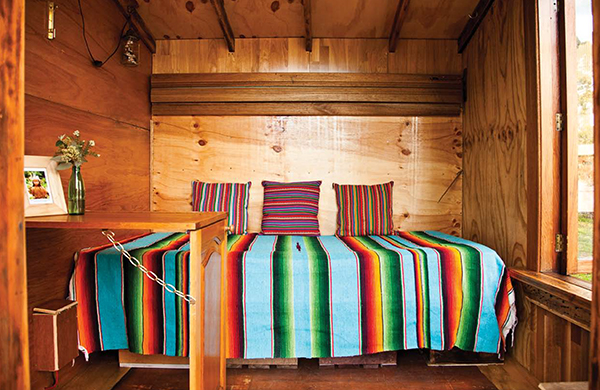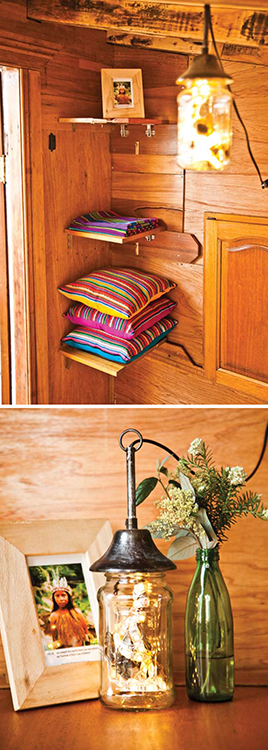

JAMES GALLETLY WAS VISITING A FRIEND IN CALIFORNIA WHEN HE FIRST PICKED UP A BOOK by tiny house publishing legend Lloyd Kahn. “The biggest part of the appeal is the DIY mentality,” he says. “People are building their own homes and coming up with designs that are far more original and creative and have more personality than what is normally considered a home.” He took the tiny house idea with him back to his native Australia.

Photograph by Alicia Fox Photography, www.aliciafoxphotography.com
James had plenty of experience with straw bale and other natural building techniques, but he had never built a tiny house before. He approached a local rebuilding center and asked them to sponsor the tiny house as a demonstration project. They gave him first pick of the reclaimed materials in stock along with space to work right outside the building. They auctioned off the tiny house once it was finished. The goal of the project was to raise awareness of how recycled materials can be used to reduce building waste and create a beautiful living space.
The design of the tiny caravan depended on the materials at hand. “I enjoyed the creative process. I enjoy the interaction between letting the materials dictate the outcome and working with what you’re given,” he says. James visited other salvage yards and went dumpster diving to supplement the things he found at the rebuilding center. He spent a month collecting materials before he started building and kept looking for things throughout the rest of the build.

Photograph by Alicia Fox Photography, www.aliciafoxphotography.com
He also reached out to the community in an unconventional way. Next to the tiny house, he had a blackboard where he could write down the things he needed for the project. People from the neighborhood would come by and drop off their extra materials for him to use. One day, James needed insulation and wrote it on the blackboard and shared a photo on social media. He came back the next morning to find piles of insulation left for him inside the half-finished building.
James found a stack of 200 flooring samples at the rebuilding center. He dug through to pick out his favorites, which are used as the interior paneling. A fold-down table and some corner shelves are made from Tasmanian oak cabinet doors. A patchwork of colorful sheets of corrugated metal, reminiscent of a quilt, make up the exterior cladding. He laid all the sheets on the ground, decided which colors looked nice together, and carefully arranged them on the wall for the most pleasing composition.
The French doors were a favorite find. All he had to do was sand them down and finish them with tung oil to bring them back to life. He had trouble finding the perfect door handles to complete the look and was about to go out and buy something new. Minutes later, someone came into the rebuilding center to donate the perfect hardware, and James snapped it up!
The few materials bought new included the house wrap, the electrical wiring, and the nails and screws. James estimates that 95 percent of the tiny house is built with reclaimed materials. He advises builders looking to use secondhand materials to keep an open mind and creatively use the things you find along the way. “It’s the most enjoyable part about secondhand materials. It’s so much easier to work with the textures and the palette you’re given.”

Photographs by Alicia Fox Photography, www.aliciafoxphotography.com